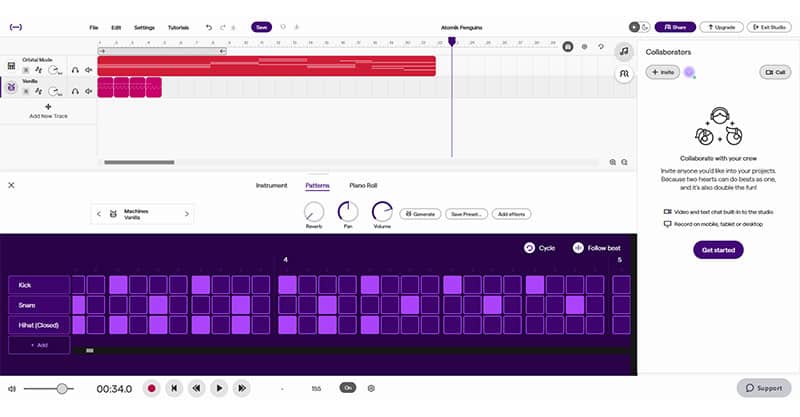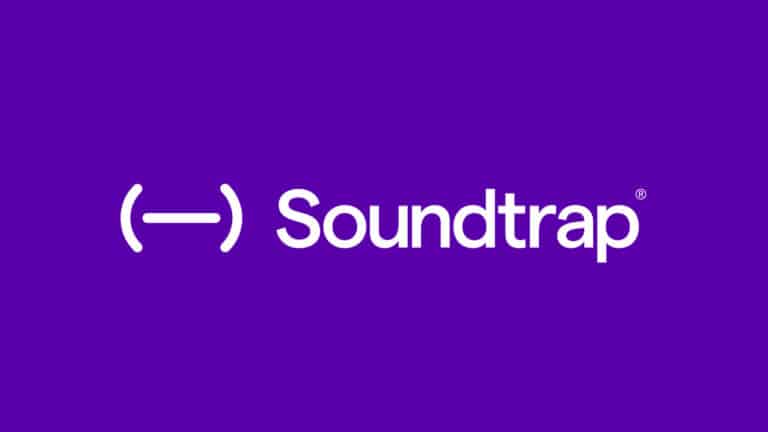Last Updated on November 1, 2022 by IDS Team
Soundtrap pros and cons tend to include much of the conversation around Spotify as a whole. While some in the music industry are really happy with its ease of use, other musicians feel it doesn’t quite cut it and oversimplifies the creative process. Read on for a look at both sides.
Soundtrap Pros and Cons: How it Works
Soundtrap is essentially an online DAW. You can make music and bring in collaborators from all over the world, in groups. It makes things easy for long-distance projects, which are now a staple of the digital music era. However, the first impression is it’s geared towards a particular type of producer. It also takes this model and expands it to other areas of sound design.
Soundtrap operates on a subscription basis and starts with Soundtrap Free. After this, it advertises four tiers: Soundtrap for Music Makers premium and supreme, as well as Soundtrap for Storytellers, designed for podcasters, and Soundtrap Complete, which has the most features. All that’s needed after this is a simple login. Then you can begin sharing your projects with friends and collaborators. There are chat features and you can tune into projects and make adjustments, too.
Successes and Failures so Far:
It’s important to remember that Spotify started in advertising, not in music. Soundtrap’s taglines are a bit unusual for a serious producer or musician. The names of the tiers and how it’s targeting the education sector, too, mean Soundtrap feels like a very simplified DAW. However, these points make Soundtrap relatively unappealing to a large proportion of the music industry. For starters, musicians tend to work in certain ways and as a large company, Spotify isn’t familiar with this.
Essentially Soundtrap is the recording process democratised. The mystery which previously went on only in famous recording studios is now openly available to anyone. However, mainstream DAWs such as logic still sometimes prove to be too complex for the complete novice to work with. This is especially true if your goal is not necessarily to become a producer, but you need a DAW as part of a side project such as for a film score. This is where Soundtrap comes in. It is really good at combining lots of pre-existing ideas. As a result, is perfect for this sector of the market. It also removes a lot of the steep learning curve which comes with DAWS.

Main Competitors:
Obviously, Soundtrap’s competitors include other popular DAWs. However, Soundtrap differentiates itself from these by generalising as opposed to specialising. DAWs such as FLStudio and Ableton market themselves towards particular types of musicians. Even Logic, with its heritage instruments and aesthetics, is the go-to DAW for a specific industry subculture. In this case – the pro songwriting, Nashville, California, and pop/rock audience. Yet who is Soundtrap best for? Spotify’s size is also one of its greatest flaws. The company is so large that it becomes a jack of all trades. This same principle is at play with Soundtrap. As a result, it works for those who look at things from a general perspective. This tends to include educational institutions and beginner sound designers.
One major competitor for the social collaboration aspect is Audiomovers ListenTo, which we reviewed last month. Nevertheless, ListenTo is actually far more in line with the writing process at an industry level. It also offers a slicker and more streamlined service, prioritising high quality. This includes control over specific aspects of the transmission process such as latency.
Soundtrap Pros and Cons: The Good Points
Soundtrap has many of the same pros and cons as Spotify itself. Spotify is primarily an expert in music consumers. These are people who have music on in the background but who don’t really deep dive. As a result, this audience excludes the vast majority of sound designers and producers and even a significant percentage of guitarists and other instrumentalists. Soundtrap is therefore a unique product of this – a DAW geared towards not geeks but casual creators. This makes it less than exciting for serious music lovers – but a real lifesaver for the increased number of those now interested in music creation.
It’s also collaborative, which means that it is perfect for teaching. This is in line with how Soundtrap is a social endeavour. It follows the same pattern as how Spotify allows users to share playlists and listen together. It’s clear Spotify targets Soundtrap for a certain kind of creator.
Soundtrap’s Flip-Side: The Bad Points
However, this has its downside. Many of the things found only on Soundtrap are best for novices. Its preset beats make it really easy to create music quickly which is perfect for a school or university project, but on an industry level doesn’t quite hold up. As a result, some of the platform’s marketing, which seems aimed towards serious musicians, falls short. There is the air of a large company trying and failing to keep up with the times. This is not to say Soundtrap is bad, per se. It’s just that its target audience isn’t what you might expect and it’s prone to false advertising.
Soundtrap Pros and Cons: Overall Assessment
Soundtrap tries to do a lot in one go. Its values and the kind of musical interaction it promotes are similar to Spotify as a whole. It prioritises sharing and socialising similar to a social media platform as opposed to the serious studio work promised by potential competitor ListenTo by Audiomovers. Again, this doesn’t mean Soundtrap is bad. It just means it’s niche seems more within education or casual music creation.
Therefore, Soundtrap is fun if you’re a diehard Spotify user and you need a usable DAW with a small learning curve. It’s fantastic if you need shortcuts and you don’t want to teach yourself full music production. The designers gave it some really good software development, so you can push it to quite high levels for independent artists. However, it’s just not the kind of challenging, stimulating software which really pro gear fanatics would use – but Spotify didn’t intend it this way.
Final Thoughts:
Soundtrap pros and cons are very dependent on whether you like Spotify’s overall way of doing things. Some people love it. Some hate it. It focuses on big business and is another wing of the Spotify behemoth. Therefore, it’s a bit one size fits all. Producers can use it for their own purposes as a result of this sort of blank slate. Yet, it’s also lacking some of the things which really draw music lovers to gear. Yet if you need something easy to understand and want to start producing quickly, it’s worth a shot.
If you liked this article, check out more on software here, as well as our review of ListenTo by Audiomovers here.



